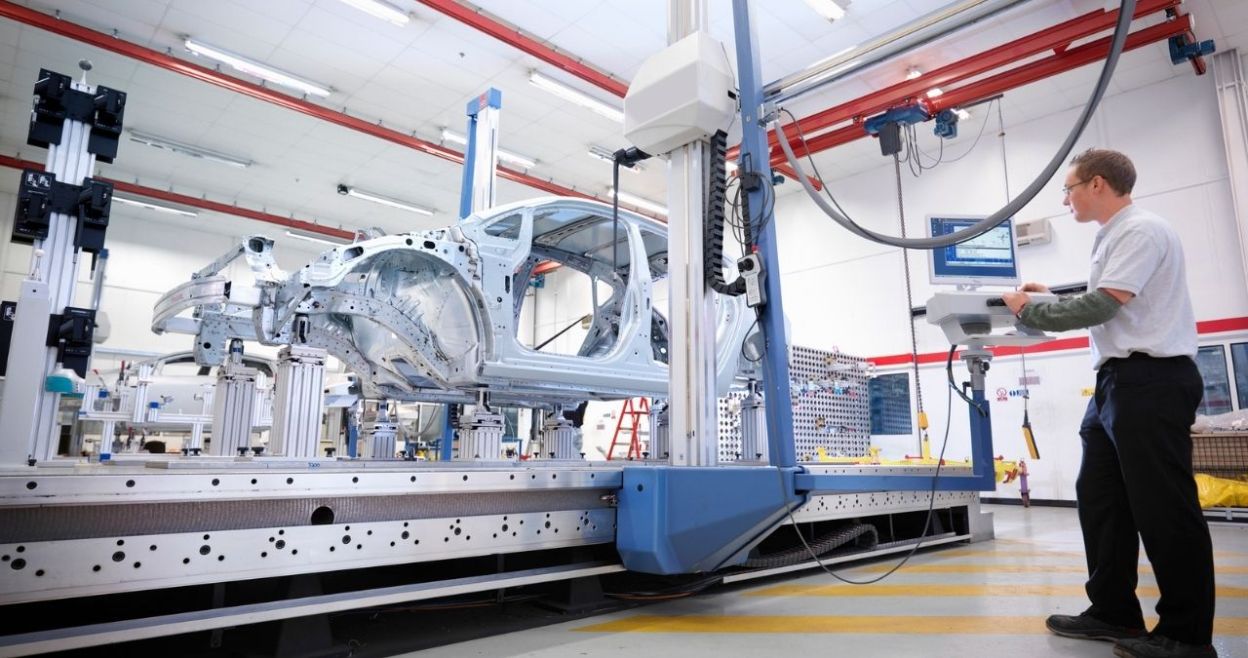Digital twin technology is going mainstream at global manufacturers.
Accenture envisions digital twins among the top five strategic technology trends to watch in 2021 and 2022.
The businesses that start today, building intelligent twins of their assets and piecing together their first mirrored environments, will be the ones that push industries, and the world, toward a more agile and intelligent future.
Accenture “Technology Trends 2021”
What’s a Digital Twin?
The definition of a digital twin, according to the Digital Twin Consortium, is "a virtual representation of real-world entities and processes, synchronized at a specified frequency and fidelity."
In plain language, this means a digital twin is an exactvirtual copy (or twin) of a physical thing.
The “thing” can be anything that has connected sensors that are capable of sending information to and from the virtual model.
For example, an automotive manufacturer could have a critical component in its assembly line sending continuous data about how quickly it’s processing materials back to a digital twin. The goal: without examining the physical component, workers can tell how it is performing—or will perform—by looking at the digital twin.
What’s the Benefit to Manufacturing?
With digital twins, manufacturers hope to do any number of things better, such as:
- Diagnose and find root causes faster.
- Perform predictive maintenance before equipment breaks.
- Reduce quality problems by enhancing product design.
Because it is wide-reaching technology, digital twins can be used throughout the entire manufacturing lifecycle—from engineering, to design, production and operations.
Among other benefits, digital twins can:
- Accelerate product development.
- Reduce defects.
- Troubleshoot equipment.
- Increase uptime.
- Decrease manufacturing costs.
Types of Digital Twins
In manufacturing, organizations can create digital twins at various levels:
- Component:A single component in the manufacturing process.
- Asset:A piece of equipment (involving multiple components) within a production line.
- System: An entire production line.
- Process:Any or all of the entire manufacturing process—design, development manufacturing, production, distribution and after-sales use by customers.
Manufacturing Uses of Digital Twins
Digital twin technology is being used in many ways. These are five of the most common applications and their benefits.
1. Improve Quality
By monitoring and automatically responding to continuous data from sensors on the factory floor, teams can improve quality and dramatically reduce, if not eliminate, costly rework. Digital twins:
- Model every step of production processes.
- Isolate where there’s variability.
- Help identify where to switch to better materials or processes.
Continuous monitoring is much more effective than random inspection. Digital twins also allow teams to visualize products in use by real users in real time. Ultimately, this helps brands spot defects or anticipate issues before customers do.
2. Design Better Products
Engineers that use digital twins as virtual prototypes during product design have low-cost, low-risk ways to perform simulations or proof-of-concept (PoC) templates before investing in solid material prototypes. This can dramatically reduce the number of physical iterations required to get the product into production, saving both time and money.
3. Perform Predictive Maintenance
Sensors in a manufacturing component, device or process generate a plethora of data in real time. Teams then can use AI and advanced analytics to pinpoint potential issues and proactively address. This allows time to schedule preventive maintenance that is most convenient for operations, which in turn helps:
- Avoid unplanned shutdowns.
- Boost production line efficiency.
- Reduce overall maintenance expense.
4. Enhance the Customer Experience
Digital twins extend beyond factory walls, helping teams understand in real time how customers are using and enjoying products. Virtual prototypes collect a rich store of data that tells workers precisely how products are performing in the real world. With that data, design and engineering teams know what’s needed to improve customer experience, especially related to the user interface.
5. Accelerate Risk Assessment
Manufacturers using digital twins can reduce risk in two ways. First, by iterating more often in testing and product validation. Secondly, by pinpointing potential process issues on the factory line before embarking on production. Teams can simulate different scenarios and disruptions, helping them mitigate any issues in advance. This greatly reduces production risk.
Digital Twin Insights Improve Business Outcomes
Digital twins are becoming critical “factory of the future” technologies. They provide insights into production lines, manufacturing processes and end-user experience. With a digital twin, workers can troubleshoot problems, identify future challenges and, ultimately, enhance customer satisfaction.

